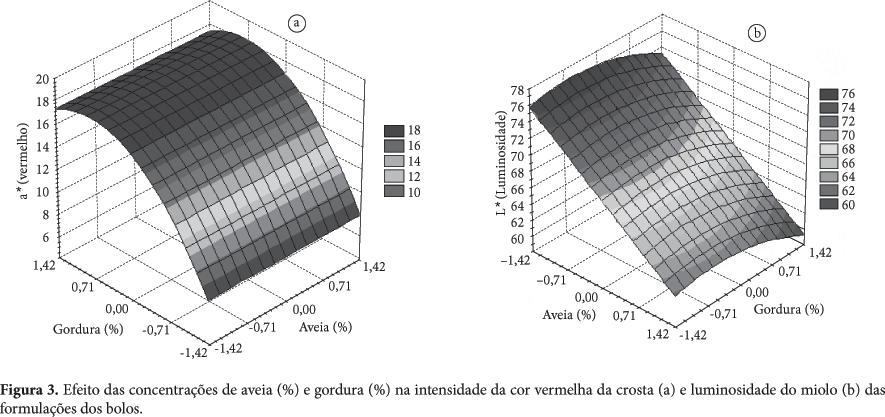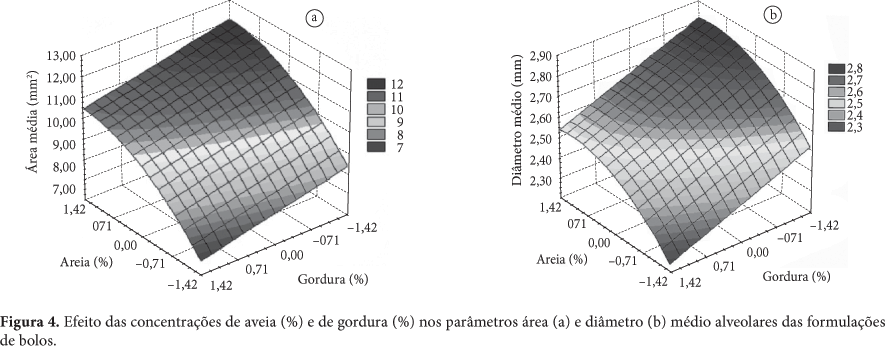The present work aimed to study the use of oat and fat in the technological and functional characteristics of cakes. The ingredients used were oat flakes and flour (Avena sativa L.), of the cultivar IAC 7 (30% of toasted thick flakes and 70% of flour), selected based on the chemical composition, wheat flour, sugar, salt, baking powder, emulsifier, powdered milk, whole egg, sorbitol, and vanilla flavor. The experiment was carried out using a central composite rotational design applied to the response surface methodology (RSM). The levels of oat (flakes, flour) and fat were established as independent variables. The results of dough density, dough viscosity, chemical composition, metabolizable energy, specific volume, water activity, internal characteristics, porosity, and color were analyzed by multiple regression; and the significant linear, quadratic, and interaction terms were used in the second order mathematical model. Oat can be used for preparing cakes with reduced caloric value, sources of dietary fiber, which are characteristics of functional foods. The dough density varied with the amount of fat added in the formulation while the viscosity varied with the oatmeal concentration. The porosity of the cake crumbs was influenced by the oatmeal and fat concentrations used in the formulations. With the increase of the oat level and decrease of fat in the formulations, the average area, diameter, and perimeter of the alveoli increased.
Avena sativa L; composite flour; functional food; fiber; caloric value









